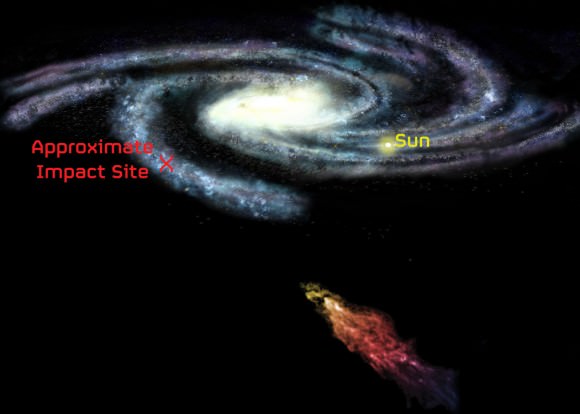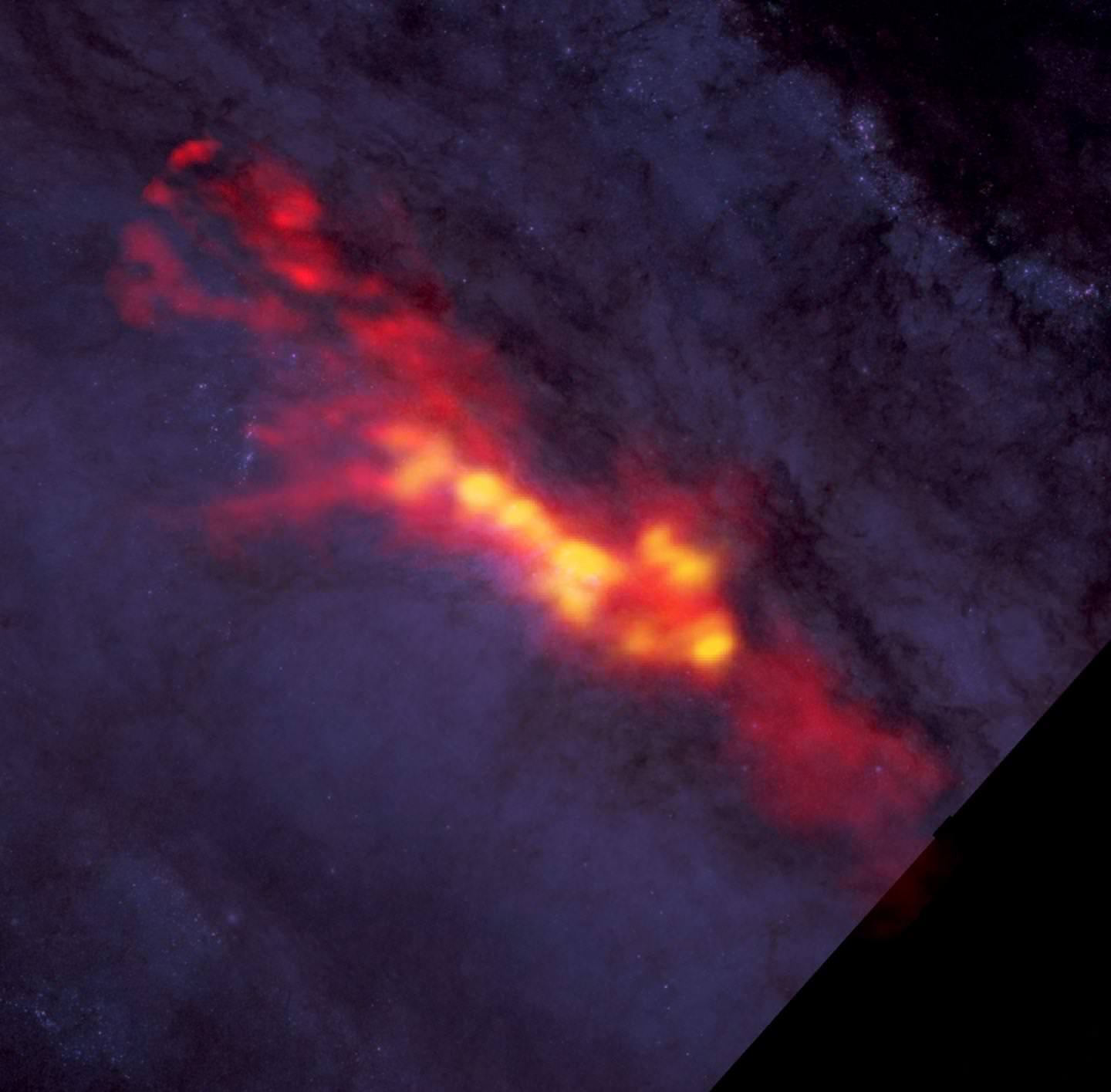When we look up at the night sky outside of the bright city, we can see a dazzling array of stars and galaxies. It is more difficult to see the clouds of gas within galaxies, however, but gas is required to form new stars and allow galaxies to grow. Although gas makes up less than 1% of the matter in the universe, “it’s the gas that drives the evolution of the galaxy, not the other way around,” says Felix “Jay” Lockman of the National Radio Astronomy Observatory (NRAO).
With radio telescopes and surveys such as the Green Bank Telescope (GBT) in West Virginia, the Atacama Large Millimeter/submillimeter Array (ALMA), and the Arecibo Legacy Fast ALFA (ALFALFA) survey, Lockman and other astronomers are learning more about the role of gas in galaxy formation. They presented their results at the annual American Association for the Advancement of Science (AAAS) meeting in San Jose.
Although we have an excellent view of our part of the Milky Way, and we can tell that it has a disk-shaped structure — that is the origin of its name, after all — it is not so simple to study how the galaxy formed. Lockman described the situation with an analogy: if you were trying to understand how your own house was built without leaving it, you would look and listen throughout the house and you would look out the window to learn what you can from your neighbors’ homes. Andromeda is the Milky Way’s largest neighbor, and they both have “satellite” galaxies traveling around them, some of which appear to have gas.
In addition, Lockman and his colleagues found clouds of gas between Andromeda and one of its satellites, Triangulum, which could be a “source of fuel for future star formation” for the galaxies. As a dramatic example of high-velocity clouds, Lockman presented new GBT images of the Smith Cloud, which was first discovered in 1963 by a student in the Netherlands. The Smith Cloud is a newcomer to the Milky Way and could provide enough gas to form a million stars and solar systems. Based on its speed and trajectory, “we think in a few million years, splash!” as it collides with our galaxy.

Kartik Sheth, another scientist at NRAO, continued with a description of astronomers’ current state of knowledge of the assembly of disk and spiral galaxies, of which the Milky Way and Andromeda are only two examples. Spiral galaxies typically have many gas clouds forming new stars, often referred to as stellar nurseries, and now with ALMA, “a fantastic telescope at 16,500-ft elevation,” Sheth and his colleagues are studying them in more detail.
In particular, Sheth presented newly published results by Adam Leroy in the Astrophysical Journal, in which they examine star-forming clouds in the heart of the nearby starbursting galaxy, Sculptor, to study “the physics of how gas got converted into stars.” Sculptor and other starbursts form stars at a rate about 1,000 times faster than typical spiral galaxies like the Milky Way. “Only with ALMA can we actually accomplish observations like this” of objects outside our galaxy. By comparing the concentration and distribution of ten gas clouds in Sculptor, they find that the clouds are more massive, ten times denser, and more turbulent than similar clouds in more typical galaxies. Because of the density of these stellar nurseries, they can form stars much more efficiently.
Other astronomers at the AAAS meeting, such as Claudia Scarlata (University of Minnesota) and Eric Wilcots (University of Wisconsin), presented a larger-scale picture of how spiral galaxies collide with each other to form more massive elliptical-shaped galaxies. These galaxies typically appear older and have stopped forming stars, but they can grow by “merging” with a neighboring galaxy in its group. “I will contend that most galaxy transformations take place in groups,” says Wilcots. In a paper based on ALFALFA data published in the Astronomical Journal, Kelley Hess and Wilcots find gas-rich galaxies distributed primarily in the outskirts of groups, and therefore these systems tend to grow from the inside out.
In a related issue, both Priyamvada Natarajan (Yale University) and Scarlata discussed how the evolution of massive black holes at the centers of galaxies appear to be related to that of the galaxy as a whole, when astronomers follow them from “cradle to adulthood.” In particular, Natarajan explained how mature galaxies’ black holes can heat the gas in a galaxy and drive gas outflows, thus preventing continued star formation in the galaxy.
Finally, astronomers look forward to much more upcoming cutting-edge research on gas in galaxies. Ximena Fernández (Columbia University) described the COSMOS HI Large Extragalactic Survey (CHILES) of hydrogen gas in galaxies with the Very Large Array. They have completed a pilot survey so far, in which they have obtained the most distant detection so far of a galaxy containing gas. They plan to peer even further into the distant past than previous surveys, expecting to detect gas in 300 galaxies up to 5 billion light-years away—250 times further than the galaxy observed by Leroy.
Fernández also described MeerKAT, a radio telescope under construction in South Africa, and the Deep Investigation of Neutral Gas Origins (DINGO) in Australia, both of which will serve as precursors for the Square Kilometer Array in the 2020s. These new telescopes will add to astronomers’ increasingly complex view of the formation and evolution of galaxies.


Well written and informative. Good job Ramin. The image of the Smith Cloud approaching the Milky Way is mind blowing! Keeping track of all the acronyms too! ~@; )